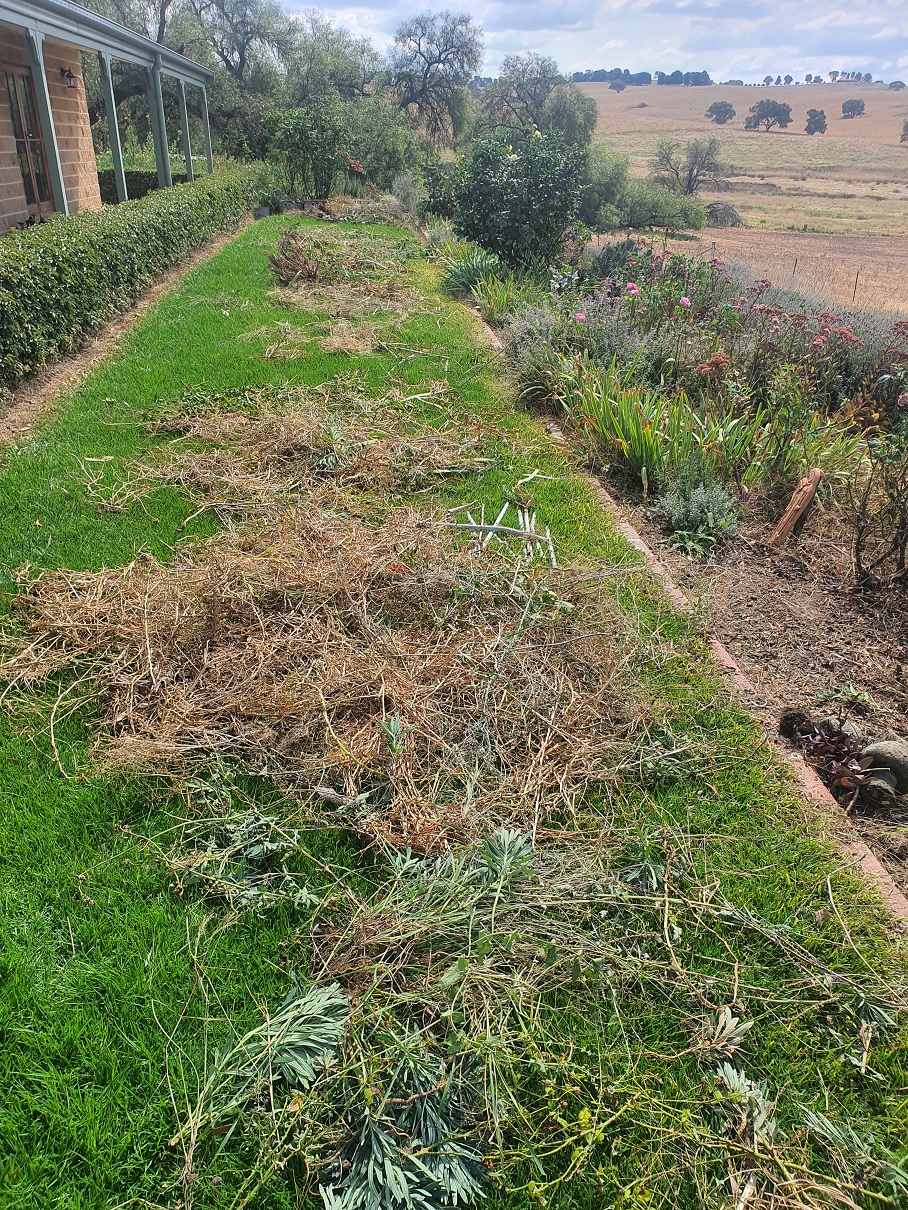
10 Apr Battling Weeds
This past Summer had milder temperatures with a large amount of rain for us here in the Hilltops Region so I know the weeds for many have been a nightmare including kikuyu growing through garden beds. It’s been a NIGHTMARE! I thought I would share some tips with you that we use in our own garden and out on our garden maintenance projects to battle through these weeds. The two main aims you should have for weeding is to try to get all of the roots of the weed out when weeding so they don’t resprout. The second aim is to get the weeds out before they go to seed. If you get your weeds out before seeding you will prevent those seeds from spreading and creating another seed bank of weeds in the soil ready for next year. To achieve these aims here are a few tips
Make sure the soil is moist
If the soil is dry where you need to weed leave a sprinkler running on the area for a few hours or overnight to wet down the soil or even better jump into your weeding right after it has rained. The soil needs to be moist but not too muddy. This will make for easier digging and you will have a better chance at pulling the entire root system out in one go.
Remove the seed heads
If you are running short on time but can see your garden weeds going to flower then a quick task for you to do is to remove the flowers or seed heads before they burst. This at least will reduce the number of seeds from developing and then spreading.
Tools
As with any garden tasks using the correct tools for the job will make it alot easier. My top tools to use for weeding are a hand spade, hori hori knife and a slightly longer handled spade and garden fork. These ones are about one metre in length and are a perfect length to tackle the taller woody weeds from a kneeling position. They are from Digadoo Tools. I also suggest if you do have a long day of weeding ahead a good pair of knee pads is a worthy investment. I’m now an official convert to wearing knee pads – don’t knock them until you try them! They are especially advantageous to you if you have to kneel on pebbles or a hard surface to weed.
Selective herbicide
I never recommend the use of chemicals in the garden, it is just not worth the risk to yourself and the local fauna however this year has been a lot different. If the kikuyu is just so unruly you don’t know where to start you can try using a selective herbicide such as Fuselaid. It is my last resort but it does work. This will kill the grass or narrow leaved plants without killing the broad leaf plants. Always follow the directions on the packet and take all the recommended safety precautions including a proper certified chemical mask, gloves, long sleeves, trousers and eye protection The application of a selective herbicide will take awhile to kill off the grass possibly a month or so as the weather is cooling down. Once the grass is dead it will be easier to remove and will hopefully kill off the bulk of the roots too. Always be careful to only use herbicides when there is no wind or rain predicted. The weeds also need to be dry to have a high success rate.
Non selective herbicide
This type of herbicide can be used in open areas where there are no plants or in hard surfaced areas such as on pathways. Using a general herbicide or weed killer in areas where there are no plants or say on paved areas can be a quick way to remove the weeds. Once again follow all safety precautions. We find one spray over the area will kill off the weeds then you can either remove by hand or use a whipper snipper to cut the dead foliage back to ground level. I recommend Slasher to use on your weeds. Its a registered organic herbicide. As previously mentioned always be careful to only use herbicides when there is no wind and no rain is predicted. The weeds also need to be dry to have a high success rate.
Layers of newspaper and mulch
Depending on the types of weeds you have you could try the smothering method however this really only works on low soft leaved annual weeds. Once you have removed the weeds I do highly recommend that you apply a layer of newspaper or non- coated cardboard to your garden areas and then cover with a thick layer of mulch. This will definitely help prevent weeds from growing.



